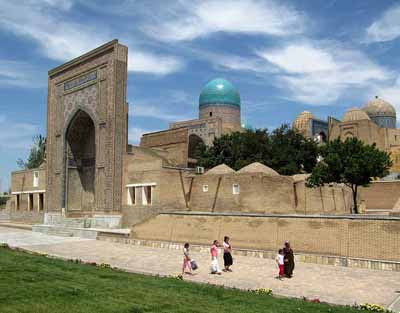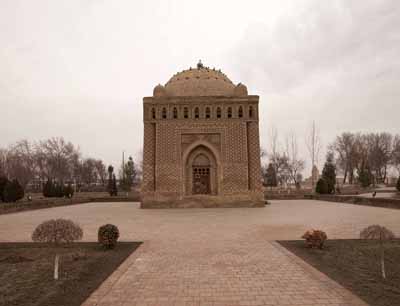After my pilgrimage to the Tomb of Khazret Khizr , the Patron Saint of W anderers and Marijuana , I wandered by the Shah-i-Zinda Necropolis. Although most of tombs here date to the Timurid Era in the 14th and 15th centuries, the complex was founded in the eleventh century, before the invasion of Chingis Khan in 1220, and I was curious to see what if anything had survived the Mongol onslaught. Since the complex is quite large and I doubted if anything which survived Chingis’s assault on the city would be marked I decided I better hire a professional guide. I was extremely lucky in acquiring the services of Denis Vikulov , who has worked as a guide for numerous professional photographers, reporters, and writers as well as run-of-the-mine tourists like myself. Not only was he already aware of some parts of the complex said to date to before Chingis’s invasion, he also called one of his old college professors who gave him some additional hints as to what to look for. The entrance to the




